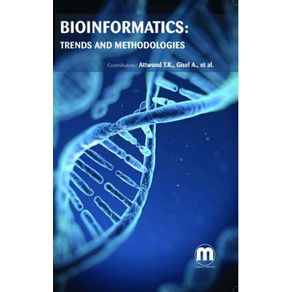Bioinformatics is the application of computer technology to the management of biological information.
Computers are used to gather, store, analyze and integrate biological and genetic information
which can then be applied to gene-based drug discovery and development. The text Bioinformatics-
Trends and Methodologies presents most recent topics and basic concepts in bioinformatics. A
European perspective on concepts, historical milestones and the central place of bioinformatics in
modern biology has been discussed in rst chapter. In second chapter, we present algorithms that
help user to select their choice of data sources and apply evidence code algorithm to compute an integrated
EV code and RI for the pathway data of interest. Third chapter shows the techniques and the
some of the results of the miRNA transcriptomes in the liver using sequencing. The objective of fourth
chapter is to investigate the nuclear transport constituents of T. brucei by determining the functional
characteristics of the parasite proteins. In fth chapter, we propose an in silico approach to unravel
putative functions for IFT88, particularly in testis and spermatozoa, and therefore understand its role
in cell physiology. Systemic approach to the genome integration process of human lentivirus has been
introduced in sixth chapter. Recent developments in next-generation sequencing annotation have
been proposed in seventh chapter. Eighth chapter presents a hybrid federated cloud computing platform
that aims at integrating and controlling di erent bioinformatics tools in a distributed, transparent,
and exible and fault tolerant manner. A survey on hardware accelerated molecular docking has
been discussed in ninth chapter. In tenth chapter, we highlight the successes in using molecular
dynamics simulations to speed up the rational design of antiviral drugs. The aim of eleventh chapter is
to identify interactions between ligands and their host molecules, typically proteins, given their
three-dimensi




